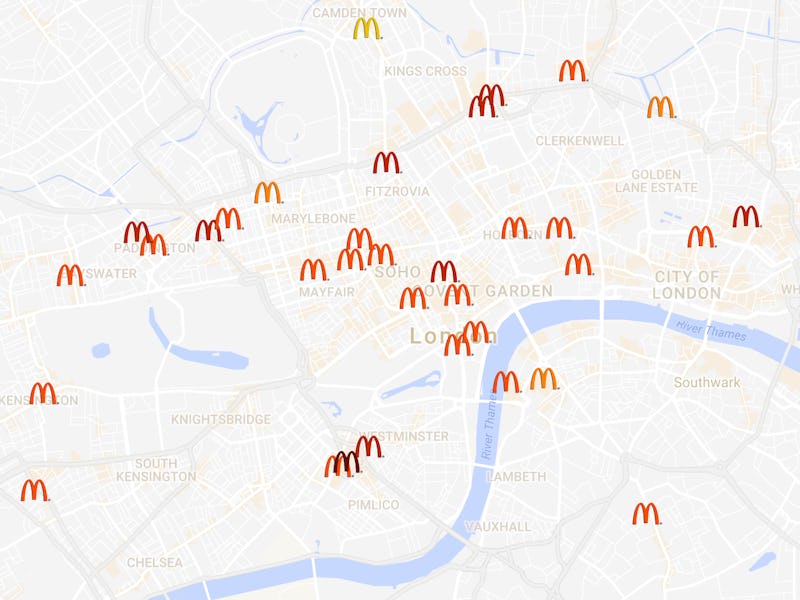If you’re looking for a cheap bite to eat, you might try to seek out the nearest McDonald’s. But you may be shocked to learn that, because of the franchise system, outlets set their own prices, and they can vary wildly. The Economist famously built out the Big Mac Index around this disparity to compare purchasing power between currencies, but even at the city level, you need to be careful which McDonald’s you go to and where.
Tom Ravenscroft, an architectural historian and journalist, has built a crowdsourced map of McDonald’s across London, and discovered something bizarre. The price of a Big Mac meal varies from anywhere between £4.09 ($5.12) and £4.89 ($6.12).
“I always thought prices were same, and a lot of people I spoke to have the same thing,” Ravenscroft tells Inverse. “A lot of my friends were like, ‘Wait, what? You’re kidding me.’”
Perhaps even weirder, it seems at first glance like there’s little pattern to the variety. Tourist hotspots aren’t necessarily the most expensive, a group you may expect to eat at McDonald’s as a quick food fix during sightseeing tours. In fact, the cheapest place to get McDonald’s is by Greenwich station, one of the most popular attractions for visitors.
Take a look at the map below, where a darker golden arches logo indicates a higher price:
Greenwich, in... green, is the place to be for a cheap Mac.
You’ll notice that certain areas have darker red McDonald’s outlets than others. A pattern emerges around London terminal stations, the stations where people from around the country first get off into London. Victoria, Paddington, Liverpool Street, and King’s Cross all have some of the highest Big Mac prices in the city. In fact, walking 0.2 miles out of Victoria station will save you $0.25 (or £0.20) on the price of a meal.
It gets weirder. Denham, on the very outskirts of London, has the highest price in the city, and Cobham, on the highway that loops around the city, also ranks very high. Neither of these areas have many tourists passing through.
Instead, a different pattern emerges. Areas with high numbers of people traveling through at speed have a higher Big Mac meal price. “It’s areas where there’s a fast turnover of people, and so they have fewer options,” Ravenscroft says.
High streets and shopping malls may have large amounts of foot traffic, but visitors have the luxury of spending some time comparing meal choices and refusing to eat at a McDonald’s with a high price. Not so by the station or highway. If a train passenger or car driver needs food, they don’t have much choice about where it comes from. Infrastructure has served McDonald’s an ideal captive audience, and it’s making the most of it.
View the full interactive map here.
